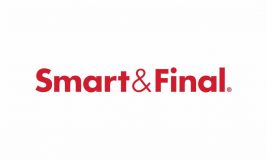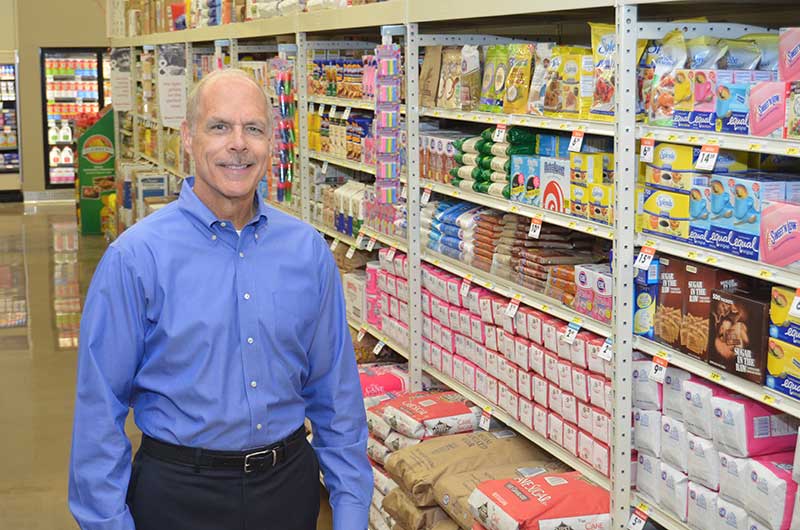On March 13 Smart & Final Stores Inc. reported its results for the fourth quarter and full year ended Dec. 30.
For the 52-week year, net sales were $4.74 billion, an increase of 3.7 percent vs. $4.57 billion in 2017. Net sales growth was driven in part by the net sales contribution of new stores and a 1.2 percent increase in comparable store sales, the company said, adding that the increase in comparable store sales was attributable to a 2.3 percent increase in comparable average transaction size, partially offset by a 1.1 percent decrease in comparable transaction count.
 Commerce, California-based Smart & Final, which describes itself as a value-oriented food and everyday staples retailer, in the U.S. operates 326 grocery and foodservice stores under the Smart & Final, Smart & Final Extra! and Smart Foodservice Warehouse Stores banners in California, Oregon, Washington, Arizona, Nevada, Idaho, Montana and Utah (201 Smart & Final Extra! stores, 59 legacy format Smart & Final stores and 66 Smart Foodservice Warehouse stores). The stores offer products in a variety of sizes, serving household, nonprofit and business customers.
Commerce, California-based Smart & Final, which describes itself as a value-oriented food and everyday staples retailer, in the U.S. operates 326 grocery and foodservice stores under the Smart & Final, Smart & Final Extra! and Smart Foodservice Warehouse Stores banners in California, Oregon, Washington, Arizona, Nevada, Idaho, Montana and Utah (201 Smart & Final Extra! stores, 59 legacy format Smart & Final stores and 66 Smart Foodservice Warehouse stores). The stores offer products in a variety of sizes, serving household, nonprofit and business customers.
Net sales for Smart & Final banner stores were $3.7 billion, an increase of 3.2 percent compared to $3.6 billion in 2017. Full year 2018 comparable store sales for the Smart & Final banner increased 0.5 percent.
Net sales for Smart Foodservice Warehouse banner stores were $1.1 billion, a 5.6 percent increase vs. $1.0 billion in 2017. Full year 2018 comparable store sales for the Smart Foodservice Warehouse banner increased 3.6 percent.
“Our fiscal 2018 performance was solid, with 3.7 percent year-over-year sales growth, while facing an environment with low rates of product price inflation and rising operating costs that created significant headwinds to earnings growth,” said David Hirz, president and CEO. “In the fourth quarter we delivered our seventh consecutive quarter of positive comparable store sales, led by growth in both average transaction size and comparable transaction count, reflecting our unique assortment of business and club-pack items, our high-quality private label offerings, and convenient e-commerce options.”
The net loss for the year was $112.2 million, which included non-cash impairment and valuation charges of $119.6 million on an after-tax basis. This compares to a net loss of $138.9 million, which included a goodwill impairment charge of $180.0 million, in 2017. In fiscal 2017, the results included a non-cash net benefit of $27.0 million, as a result of the Tax Cuts and Jobs Act and other one-time items, primarily due to a lower valuation of net deferred tax liabilities. Net loss per share was $1.54 in 2018, compared to $1.92 for 2017.
Adjusted net income was $31.4 million, compared to $33.7 million in 2017. Adjusted net income per diluted share was $0.42 vs. $0.45 per diluted share in 2017.
Adjusted EBITDA was $181.8 million, as compared to $184.4 million in 2017.
Fourth quarter results
In the 12-week fourth quarter, net sales were $1.1 billion, a 3.2 percent increase vs. $1.07 billion for the same period of 2017. Net sales growth was driven by a 1.9 percent increase in comparable store sales and from the net sales contribution of new stores, according to the company. Comparable store sales growth was comprised of a 1.7 percent increase in comparable average transaction size and a 0.2 percent increase in comparable transaction count.
Quarterly net sales for Smart & Final banner stores were $864.4 million, a 2.7 percent increase vs. $841.4 million for the same period of 2017. Comparable store sales growth for the banner was 1.3 percent in the fourth quarter.
Net sales for Smart Foodservice Warehouse banner stores were $238.0 million, a 5.0 percent increase compared to $226.6 million for the same period of 2017. Comparable store sales growth for the Smart Foodservice Warehouse banner was 4.3 percent in the fourth quarter.
Net loss was $121.8 million, or $1.66 per diluted share, compared to a net loss of $146.6 million, or $2.03 per diluted share, for the same period of 2017. These results include a goodwill impairment charge of $94.0 million related to the company’s Smart & Final banner, store impairment charges of $12.5 million and valuation charges related to deferred tax assets of $13.1 million on an after-tax basis. This compares to a goodwill impairment charge of $180.0 million in the same period of 2017.
Adjusted net income was $6.0 million, or $0.08 per diluted share, for the quarter, compared to adjusted net income of $11.3 million, or $0.15 per diluted share, for the same period of 2017.
Adjusted EBITDA was $41.5 million as compared to $49.1 million for the same period of 2017.
During the fourth quarter, the company opened one new Smart & Final Extra! store, relocated one legacy Smart & Final store to an Extra! format store and closed one legacy Smart & Final store whose lease was expiring. The company also opened two new Smart Foodservice Warehouse stores during the fourth quarter.
Looking ahead
While in early February it was reported that Smart & Final, which is controlled by private equity firm Ares Management Corp., was exploring options that include a sale of the company, no mention of that was made in the results report.
According to Hirz, “In 2019 we will continue to aggressively expand online options for both our small business and household customers, by introducing new e-commerce channels and order fulfillment options. Our vision will offer even greater levels of value and convenience to our target customers, at attractive economics, to capitalize on the significant growth in e-commerce that we continue to experience.”
For the first quarter of 2019, Smart & Final is projecting comparable store sales growth of 1.75-2 percent and adjusted EBITDA in the range of $25-$28 million.
The company’s full year guidance for the year ending Dec. 29, 2019, includes net sales growth of 2.5-3.5 percent; comparable store sales growth of 1.5-2.5 percent; one new Smart & Final Extra! store and four Smart Foodservice Warehouse stores; one or two relocations of legacy format stores to the Extra! format; adjusted net income of $32-$36 million; and net capital expenditures of $65-$75 million.

